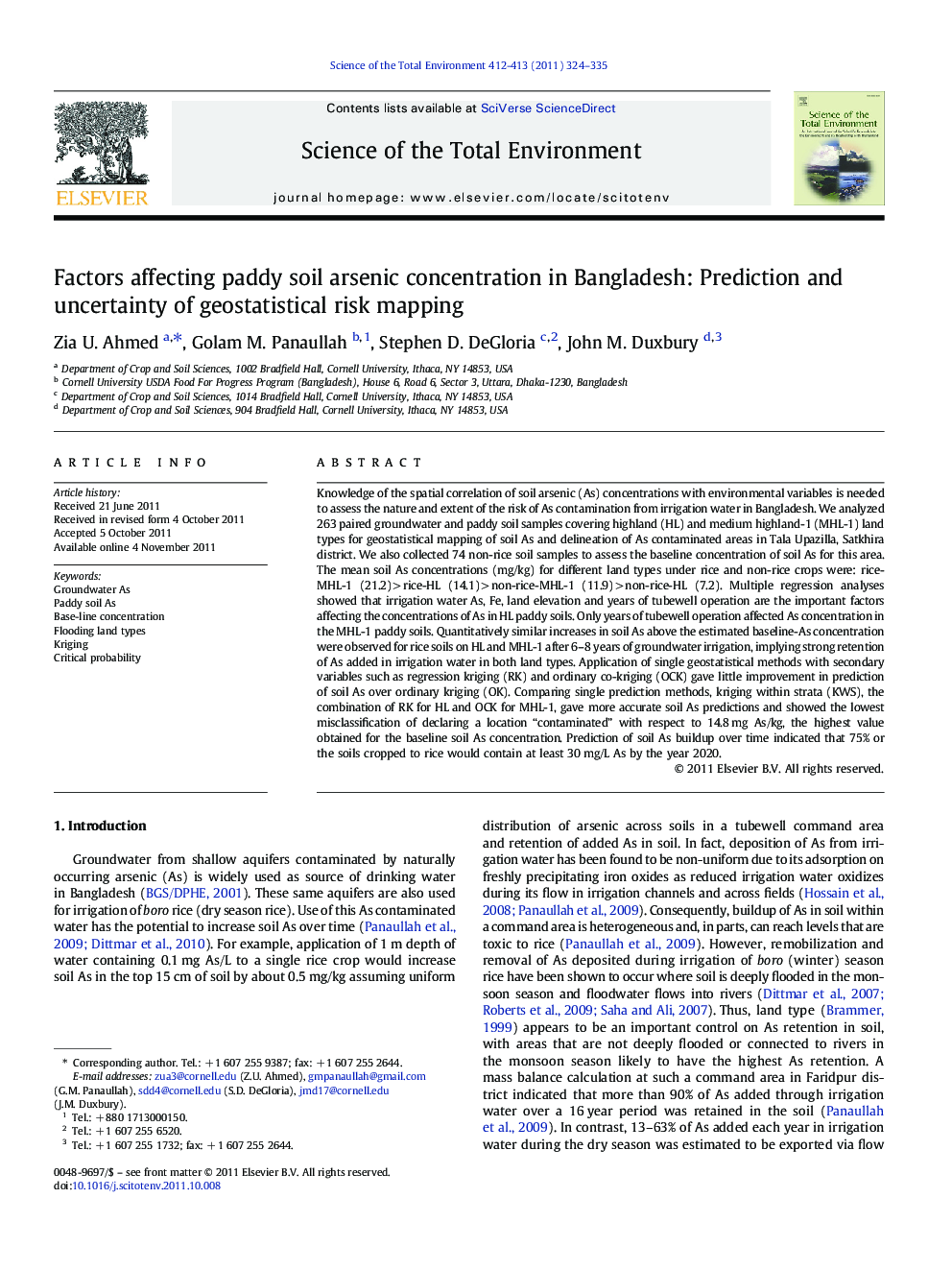| کد مقاله | کد نشریه | سال انتشار | مقاله انگلیسی | نسخه تمام متن |
|---|---|---|---|---|
| 4429729 | 1619836 | 2011 | 12 صفحه PDF | دانلود رایگان |

Knowledge of the spatial correlation of soil arsenic (As) concentrations with environmental variables is needed to assess the nature and extent of the risk of As contamination from irrigation water in Bangladesh. We analyzed 263 paired groundwater and paddy soil samples covering highland (HL) and medium highland-1 (MHL-1) land types for geostatistical mapping of soil As and delineation of As contaminated areas in Tala Upazilla, Satkhira district. We also collected 74 non-rice soil samples to assess the baseline concentration of soil As for this area. The mean soil As concentrations (mg/kg) for different land types under rice and non-rice crops were: rice-MHL-1 (21.2) > rice-HL (14.1) > non-rice-MHL-1 (11.9) > non-rice-HL (7.2). Multiple regression analyses showed that irrigation water As, Fe, land elevation and years of tubewell operation are the important factors affecting the concentrations of As in HL paddy soils. Only years of tubewell operation affected As concentration in the MHL-1 paddy soils. Quantitatively similar increases in soil As above the estimated baseline-As concentration were observed for rice soils on HL and MHL-1 after 6–8 years of groundwater irrigation, implying strong retention of As added in irrigation water in both land types. Application of single geostatistical methods with secondary variables such as regression kriging (RK) and ordinary co-kriging (OCK) gave little improvement in prediction of soil As over ordinary kriging (OK). Comparing single prediction methods, kriging within strata (KWS), the combination of RK for HL and OCK for MHL-1, gave more accurate soil As predictions and showed the lowest misclassification of declaring a location “contaminated” with respect to 14.8 mg As/kg, the highest value obtained for the baseline soil As concentration. Prediction of soil As buildup over time indicated that 75% or the soils cropped to rice would contain at least 30 mg/L As by the year 2020.
► Background soil As levels were significantly higher in medium highland-1 (MHL-1) than highland (HL).
► Soil As in HL paddy fields was related to irrigation water As and Fe, elevation and years of tubewell operation.
► Soil As related only to As loading factor in MHL-1 fields.
► The combination of RK for HL and OCK for MHL-1 areas, gave more accurate soil As predictions.
Journal: Science of The Total Environment - Volumes 412–413, 15 December 2011, Pages 324–335